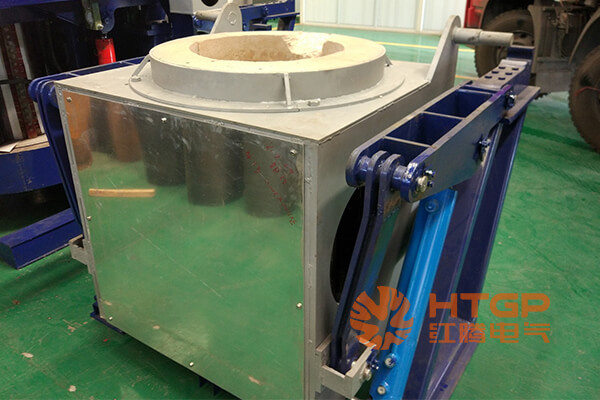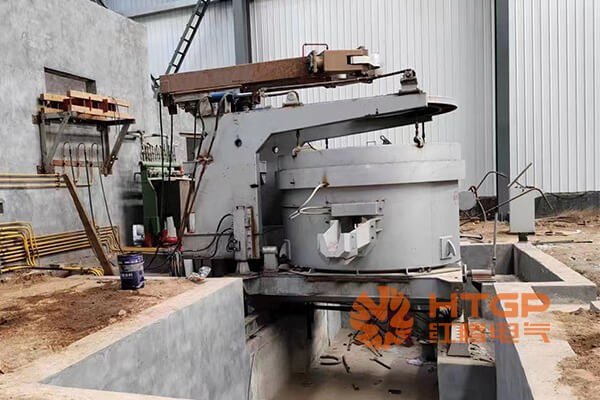Casting and Smelting Stainless Steel Process
The casting and smelting process of stainless steel is a smelting method that melts metal with heat, turns it into a liquid state, and then pours it into a mold to solidify. The advantage of casting and smelting technology is that it can produce various complex shapes, which cannot be achieved by other smelting production technologies.
Casting and Smelting Stainless Steel Process Steps
Typically, there are following several steps for smelting stainless steel. This method is widely used in the metal processing industry, including the manufacturing of aircraft, ships, railway trains, automobiles, etc.
Ingredients
According to the required composition requirements of stainless steel, prepare corresponding raw materials, such as iron, chromium, nickel, molybdenum, and other alloy elements. These raw materials can be pig iron, scrap steel, alloy materials, etc.
Melting
The prepared raw materials are put into a huge stainless steel furnace and heated to high temperatures to melt them. Intense heating is required during the melting process, which usually lasts from 8 to 12 hours.

Refining
After the melting is completed, the refining operation is performed to remove impurities and harmful gases in the molten steel and improve the purity of the molten steel. During the refining process, fluxes (such as lime and fluorspar) can be added to create slag and remove impurities.
Pouring
The refined molten steel is poured into a pre-prepared mold to form the desired semi-finished product shape. Common shapes include slabs, blooms, billets, bars, and round tubes.
Forming
Semi-finished steel sections undergo a series of forming operations, such as hot rolling, rolling, etc., to turn them into the required shape and size. For example, blooms and square billets can be converted into rods and wires, and slabs can be formed into plates, strips or sheets.
Heat treatment
The formed stainless steel semi-finished products need to be heat treated, that is, heated to high temperatures and cooled, to enhance their strength and corrosion resistance. Annealing is a common form of heat treatment in which stainless steel is heated and cooled in a controlled environment.
Surface treatment
Heat-treated stainless steel products may require surface treatment, such as pickling, polishing, etc., to remove surface dirt and scale and improve the appearance quality of the product.
Cutting and processing
As needed, stainless steel products may require cutting, welding, stamping, drilling and other processing operations to meet the shape and size requirements of the final product.
Washing and Packaging
Finally, manufactured stainless steel products need to be cleaned to remove surface dirt and impurities, and packaged to ensure they are not damaged during transportation and storage.
Stainless Steel Furnace Types
When casting and smelting stainless steel, the commonly used melting furnaces mainly include electric arc furnaces and intermediate frequency melting furnaces. What are their respective advantages and disadvantages?
Electric Arc Furnace
An electric arc furnace is one of the most commonly used furnace types for melting stainless steel. It uses electric energy as a heat source to heat and smelt materials through the reaction of carbon electrodes and bottom furnace materials. Electric arc furnaces have the advantages of high output, low energy consumption, high efficiency, and simple operation, so they are widely used in stainless steel smelting. However, the furnace materials of electric arc furnaces are susceptible to corrosion, oxidation, and deformation at high temperatures.

Advantages
Efficient melting: The electric arc furnace uses arc heating, which can quickly melt metal raw materials and has high production efficiency.
Strong flexibility: The electric arc furnace can flexibly adjust the melting temperature and melting speed to adapt to different stainless steel compositions and performance requirements.
Wide applicability: Electric arc furnaces are suitable for processing various types of metal raw materials, including scrap steel, pig iron, alloy materials, etc.
Shortcomings
High energy consumption: Electric arc furnaces require a large amount of electricity to maintain high temperatures, resulting in relatively high production costs.
Environmental pollution: The electric arc furnace will produce a certain amount of waste gas, waste residue, and noise during the smelting process, causing certain pollution to the environment.
High equipment maintenance costs: The electric arc furnace equipment has a complex structure and requires regular maintenance and repairs, resulting in high maintenance costs.
Medium Frequency Melting Furnace
The medium frequency melting furnace is a commonly used induction heating equipment for scrap steel smelting in the foundry industry and is also widely used in the smelting of stainless steel. This kind of furnace uses the principle of induction heating to quickly melt metal raw materials. The medium-frequency melting furnace has the advantages of fast heating speed, precise temperature control, uniform metal composition, energy saving, and environmental protection.
Advantages
Energy saving and environmental protection: The medium frequency melting furnace uses induction heating, which has high thermal efficiency, low energy consumption, and produces less waste gas and waste residue, which is conducive to environmental protection.
Precise temperature control: The intermediate frequency melting furnace can accurately control the melting temperature to ensure the stability of the composition and performance of stainless steel.
Easy operation: The intermediate frequency melting furnace is easy to operate and has a high degree of automation, which can reduce the labor intensity of workers.
Shortcomings
High equipment investment costs: The equipment investment costs of medium-frequency melting furnaces are relatively high and may not be suitable for small-scale production.
High requirements for raw materials: The intermediate frequency melting furnace has high requirements for raw materials, and appropriate metal raw materials need to be selected to ensure the smelting effect.
At Last
The specific steps of the casting and smelting stainless steel process may vary depending on raw material conditions, product requirements, equipment conditions, and other factors. In addition, during the smelting process of stainless steel, parameters such as temperature, atmosphere, chemical composition, etc. need to be strictly controlled to ensure product quality and performance.

